Latest Posts by artldy - Page 2
Happy International Women’s Day to all ladies with ADHD, diagnosed or otherwise. Y’all are incredibly valid.
Boys get diagnosed with ADHD 3 times more than girls despite having ADHD at the SAME RATE.
It’s why we have to spread awareness that girls can have ADHD and that they are not alone.
Cool.
Five Facts About the Kepler Space Telescope That Will Blow You Away!

Ten years ago, on March 6, 2009, a rocket lifted off a launch pad at Cape Canaveral Air Force Station in Florida. It carried a passenger that would revolutionize our understanding of our place in the cosmos–NASA’s first planet hunter, the Kepler space telescope. The spacecraft spent more than nine years in orbit around the Sun, collecting an unprecedented dataset for science that revealed our galaxy is teeming with planets. It found planets that are in some ways similar to Earth, raising the prospects for life elsewhere in the cosmos, and stunned the world with many other first-of-a-kind discoveries. Here are five facts about the Kepler space telescope that will blow you away:
Kepler observed more than a half million stars looking for planets beyond our solar system.

It discovered more than 2,600 new worlds…

…many of which could be promising places for life.

Kepler’s survey revealed there are more planets than stars in our galaxy.

The spacecraft is now drifting around the Sun more than 94 million miles away from Earth in a safe orbit.

NASA retired the Kepler spacecraft in 2018. But to this day, researchers continue to mine its archive of data, uncovering new worlds.
*All images are artist illustrations. Make sure to follow us on Tumblr for your regular dose of space: http://nasa.tumblr.com






“This Is Why You’re Always So Tired”
And a kitten named Taako.
Taako is slowly learning to cat. (Note that he’s 100% fine. I promise)
Good advice I think
“Do you want to talk about it or be distracted from it” is honestly the best thing you can say to me when I say im sad/in pain etc.
Yes.
Our house in the middle of our
House
teaching children that they are allowed to walk away and cool off if they are feeling overwhelmed might literally save their life as teens/adults






“This Is Why You’re Always So Tired”
Peaceful.

Aldebaran, Venus, Jupiter and Pleiades - Buenos Aires, Argentina.
Image credit: Luis Argerich
Space is infinitely interesting.
Ultra-Close Orbits of Saturn = Ultra-Cool Science
On Sept. 15, 2017, our Cassini spacecraft ended its epic exploration of Saturn with a planned dive into the planet’s atmosphere–sending back new science to the very last second. The spacecraft is gone, but the science continues!

New research emerging from the final orbits represents a huge leap forward in our understanding of the Saturn system – especially the mysterious, never-before-explored region between the planet and its rings. Some preconceived ideas are turning out to be wrong while new questions are being raised. How did they form? What holds them in place? What are they made of?

Six teams of researchers are publishing their work Oct. 5 in the journal Science, based on findings from Cassini’s Grand Finale. That’s when, as the spacecraft was running out of fuel, the mission team steered Cassini spectacularly close to Saturn in 22 orbits before deliberately vaporizing it in a final plunge into the atmosphere in September 2017.

Knowing Cassini’s days were numbered, its mission team went for gold. The spacecraft flew where it was never designed to fly. For the first time, it probed Saturn’s magnetized environment, flew through icy, rocky ring particles and sniffed the atmosphere in the 1,200-mile-wide (2,000-kilometer-wide) gap between the rings and the cloud tops. Not only did the engineering push the spacecraft to its limits, the new findings illustrate how powerful and agile the instruments were.
Many more Grand Finale science results are to come, but today’s highlights include:
Complex organic compounds embedded in water nanograins rain down from Saturn’s rings into its upper atmosphere. Scientists saw water and silicates, but they were surprised to see also methane, ammonia, carbon monoxide, nitrogen and carbon dioxide. The composition of organics is different from that found on moon Enceladus – and also different from those on moon Titan, meaning there are at least three distinct reservoirs of organic molecules in the Saturn system.

For the first time, Cassini saw up close how rings interact with the planet and observed inner-ring particles and gases falling directly into the atmosphere. Some particles take on electric charges and spiral along magnetic-field lines, falling into Saturn at higher latitudes – a phenomenon known as “ring rain.” But scientists were surprised to see that others are dragged quickly into Saturn at the equator. And it’s all falling out of the rings faster than scientists thought – as much as 10,000 kg of material per second.

Scientists were surprised to see what the material looks like in the gap between the rings and Saturn’s atmosphere. They knew that the particles throughout the rings ranged from large to small. They thought material in the gap would look the same. But the sampling showed mostly tiny, nanograin- and micron-sized particles, like smoke, telling us that some yet-unknown process is grinding up particles. What could it be? Future research into the final bits of data sent by Cassini may hold the answer.

Saturn and its rings are even more interconnected than scientists thought. Cassini revealed a previously unknown electric current system that connects the rings to the top of Saturn’s atmosphere.

Scientists discovered a new radiation belt around Saturn, close to the planet and composed of energetic particles. They found that while the belt actually intersects with the innermost ring, the ring is so tenuous that it doesn’t block the belt from forming.

Unlike every other planet with a magnetic field in our Solar System, Saturn’s magnetic field is almost completely aligned with its spin axis. Think of the planet and the magnetic field as completely separate things that are both spinning. Both have the same center point, but they each have their own axis about which they spin. But for Saturn the two axes are essentially the same – no other planet does that, and we did not think it was even possible for this to happen. This new data shows a magnetic-field tilt of less than 0.0095 degrees. (Earth’s magnetic field is tilted 11 degrees from its spin axis.) According to everything scientists know about how planetary magnetic fields are generated, Saturn should not have one. It’s a mystery physicists will be working to solve.

Cassini flew above Saturn’s magnetic poles, directly sampling regions where radio emissions are generated. The findings more than doubled the number of reported crossings of radio sources from the planet, one of the few non-terrestrial locations where scientists have been able to study a mechanism believed to operate throughout the universe. How are these signals generated? That’s still a mystery researchers are looking to uncover.
For the Cassini mission, the science rolling out from Grand Finale orbits confirms that the calculated risk of diving into the gap – skimming the upper atmosphere and skirting the edge of the inner rings – was worthwhile.

Almost everything going on in that region turned out to be a surprise, which was the importance of going there, to explore a place we’d never been before. And the expedition really paid off!
Analysis of Cassini data from the spacecraft’s instruments will be ongoing for years to come, helping to paint a clearer picture of Saturn.
To read the papers published in Science, visit: URL to papers
To learn more about the ground-breaking Cassini mission and its 13 years at Saturn, visit: https://www.nasa.gov/mission_pages/cassini/main/index.html
Make sure to follow us on Tumblr for your regular dose of space: http://nasa.tumblr.com.
The first West Coast SpaceX launch captured by photographer Dylan Schwartz.








It’s interesting how things are made.
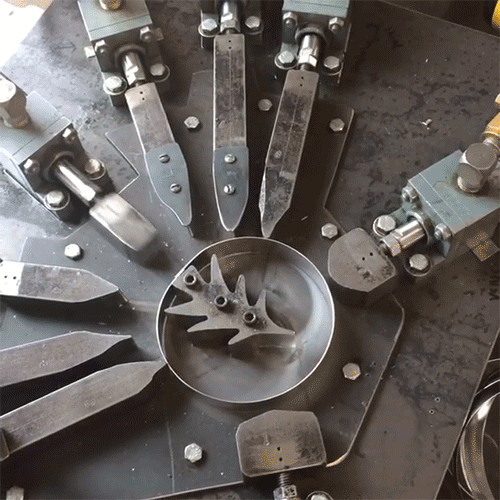

Watch How Steel Ribbons Are Shaped into Cookie Cutters


Reblog the strawberry kitty for good luck!🍓🐱










Couture Beyond, Guo Pei
The first major book on China’s leading couture visionary reveals the intricate craftsmanship and imperial glamour that has fashion publications worldwide declaring Guo Pei’s creations ‘the empire’s new clothes.’
An exponent of artisan craftsmanship and theatrical fantasy often compared to Alexander McQueen and Sarah Burton, Guo Pei dresses Chinese state dignitaries and American celebrities alike in richly bejeweled creations of imperial opulence. The designer’s first monograph, published on the occasion of her first solo exhibition, offers insight into the growing global influence of China and the complexities of its cultural transition.
#Photography on Instagram | Follow our blog for more!

The internet is keeping score
Tumblr, we know you’ve been fighting valiantly to restore net neutrality. Whether you added widgets to your Tumblrs, or reblogged posts to spread the word to your followers, or contacted your reps asking them to keep the internet free and open as we know it—you’re helping. You’re doing it. Let’s keep that momentum up.
BattleForTheNet.com (@fight4future) is letting Congress know that the internet is keeping score of every Congressperson who is and is not supporting the restoration of net neutrality.
Right now you can visit that scoreboard and easily look up whether or not your reps support the Congressional Review Act resolution.
This CRA will restore the net neutrality rules the FCC dismantled back in November 2017. They have 177 signatures, but need 44 more. You can help make that happen. This grassroots effort is working. Just two days ago Rep. Mike Coffman listened to his constituents from Colorado and became the first Republican to support the Democrat-led CRA. Keep putting that same pressure on your congresspeople. Urge them to sign the petition. If your congressperson has already pledged to support the CRA, reblog this post, add the new widget to your Tumblr (just copy and paste the small line of code from Battle For The Net right into the customize theme page on the web), and shout out what’s happening on all of your social media accounts. We have to spread the word.
Keep going, Tumblr. This matters, and you’re making a marked difference.
Otherworldly






Inside Frank Moth’s Society6 Shop
Frank Moth creates nostalgic postcards from a distant but at the same time familiar future. He makes digital collages and compositions with specific, distinctive color palettes, in a critically acclaimed style that is immediately recognizable.
Explore his entire collection

If one remembers this particular episode from the popular sitcom ‘Friends’ where Ross is trying to carry a sofa to his apartment, it seems that moving a sofa up the stairs is ridiculously hard.
But life shouldn’t be that hard now should it?
The mathematician Leo Moser posed in 1966 the following curious mathematical problem: what is the shape of largest area in the plane that can be moved around a right-angled corner in a two-dimensional hallway of width 1? This question became known as the moving sofa problem, and is still unsolved fifty years after it was first asked.
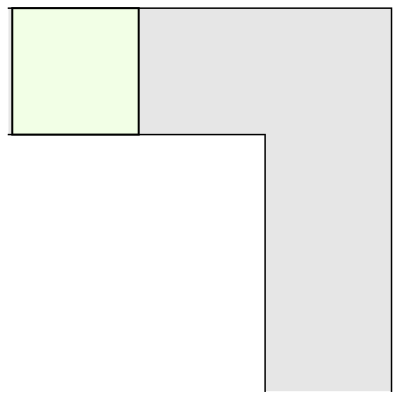
The most common shape to move around a tight right angled corner is a square.
And another common shape that would satisfy this criterion is a semi-circle.
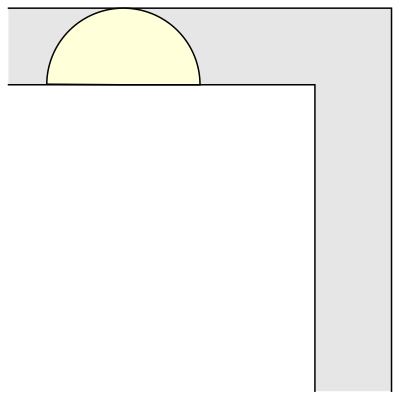
But what is the largest area that can be moved around?
Well, it has been conjectured that the shape with the largest area that one can move around a corner is known as “Gerver’s sofa”. And it looks like so:
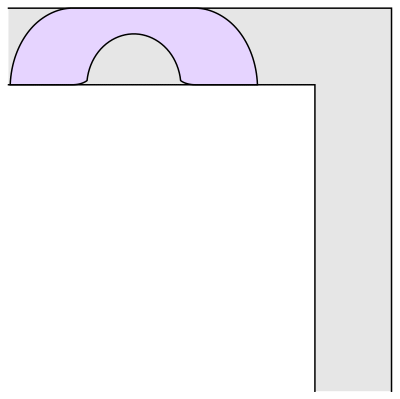
Wait.. Hang on a second
This sofa would only be effective for right handed turns. One can clearly see that if we have to turn left somewhere we would be kind of in a tough spot.
Prof.Romik from the University of California, Davis has proposed this shape popularly know as Romik’s ambidextrous sofa that solves this problem.
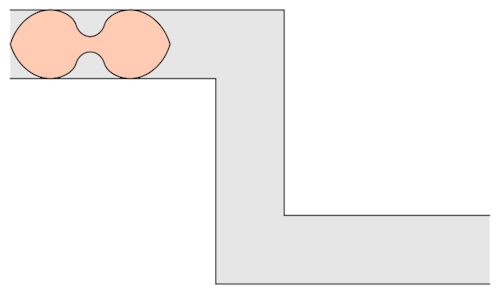
Although Prof.Romik’s sofa may/may not be the not the optimal solution, it is definitely is a breakthrough since this can pave the way for more complex ideas in mathematical analysis and more importantly sofa design.

Have a good one!
10 Things: Mars Helicopter
When our next Mars rover lands on the Red Planet in 2021, it will deliver a groundbreaking technology demonstration: the first helicopter to ever fly on a planetary body other than Earth. This Mars Helicopter will demonstrate the first controlled, powered, sustained flight on another world. It could also pave the way for future missions that guide rovers and gather science data and images at locations previously inaccessible on Mars. This exciting new technology could change the way we explore Mars.

1. Its body is small, but its blades are mighty.
One of the biggest engineering challenges is getting the Mars Helicopter’s blades just right. They need to push enough air downward to receive an upward force that allows for thrust and controlled flight — a big concern on a planet where the atmosphere is only one percent as dense as Earth’s. “No helicopter has flown in those flight conditions – equivalent to 100,000 feet (30,000 meters) on Earth,” said Bob Balaram, chief engineer for the project at our Jet Propulsion Laboratory.

2. It has to fly in really thin Martian air.
To compensate for Mars’ thin atmosphere, the blades must spin much faster than on an Earth helicopter, and the blade size relative to the weight of the helicopter has to be larger too. The Mars Helicopter’s rotors measure 4 feet wide (about 1.2 meters) long, tip to tip. At 2,800 rotations per minute, it will spin about 10 times faster than an Earth helicopter. At the same time, the blades shouldn’t flap around too much, as the helicopter’s design team discovered during testing. Their solution: make the blades more rigid. “Our blades are much stiffer than any terrestrial helicopter’s would need to be,” Balaram said. The body, meanwhile, is tiny — about the size of a softball. In total, the helicopter will weigh just under 4 pounds (1.8 kilograms).

3. It will make up to five flights on Mars.
Over a 30-day period on Mars, the helicopter will attempt up to five flights, each time going farther than the last. The helicopter will fly up to 90 seconds at a time, at heights of up to 10 to 15 feet (3 to 5 meters). Engineers will learn a lot about flying a helicopter on Mars with each flight, since it’s never been done before!

4. The Mars Helicopter team has already completed groundbreaking tests.
Because a helicopter has never visited Mars before, the Mars Helicopter team has worked hard to figure out how to predict the helicopter’s performance on the Red Planet. “We had to invent how to do planetary helicopter testing on Earth,” said Joe Melko, deputy chief engineer of Mars Helicopter, based at JPL.
The team, led by JPL and including members from JPL, AeroVironment Inc., Ames Research Center, and Langley Research Center, has designed, built and tested a series of test vehicles.
In 2016, the team flew a full-scale prototype test model of the helicopter in the 25-foot (7.6-meter) space simulator at JPL. The chamber simulated the low pressure of the Martian atmosphere. More recently, in 2018, the team built a fully autonomous helicopter designed to operate on Mars, and successfully flew it in the 25-foot chamber in Mars-like atmospheric density.
Engineers have also exercised the rotors of a test helicopter in a cold chamber to simulate the low temperatures of Mars at night. In addition, they have taken design steps to deal with Mars-like radiation conditions. They have also tested the helicopter’s landing gear on Mars-like terrain. More tests are coming to see how it performs with Mars-like winds and other conditions.

5. The camera is as good as your cell phone camera.
The helicopter’s first priority is successfully flying on Mars, so engineering information takes priority. An added bonus is its camera. The Mars Helicopter has the ability to take color photos with a 13-megapixel camera — the same type commonly found in smart phones today. Engineers will attempt to take plenty of good pictures.
6. It’s battery-powered, but the battery is rechargeable.
The helicopter requires 360 watts of power for each second it hovers in the Martian atmosphere – equivalent to the power required by six regular lightbulbs. But it isn’t out of luck when its lithium-ion batteries run dry. A solar array on the helicopter will recharge the batteries, making it a self-sufficient system as long as there is adequate sunlight. Most of the energy will be used to keep the helicopter warm, since nighttime temperatures on Mars plummet to around minus 130 degrees Fahrenheit (minus 90 Celsius). During daytime flights, temperatures may rise to a much warmer minus 13 to minus 58 degrees Fahrenheit to (minus 25 to minus 50 degrees Celsius) — still chilly by Earth standards. The solar panel makes an average of 3 watts of power continuously during a 12-hour Martian day.
7. The helicopter will be carried to Mars under the belly of the rover.
Somewhere between 60 to 90 Martian days (or sols) after the Mars 2020 rover lands, the helicopter will be deployed from the underside of the rover. Mars Helicopter Delivery System on the rover will rotate the helicopter down from the rover and release it onto the ground. The rover will then drive away to a safe distance.

8. The helicopter will talk to the rover.
The Mars 2020 rover will act as a telecommunication relay, receiving commands from engineers back on Earth and relaying them to the helicopter. The helicopter will then send images and information about its own performance to the rover, which will send them back to Earth. The rover will also take measurements of wind and atmospheric data to help flight controllers on Earth.
9. It has to fly by itself, with some help.
Radio signals take time to travel to Mars — between four and 21 minutes, depending on where Earth and Mars are in their orbits — so instantaneous communication with the helicopter will be impossible. That means flight controllers can’t use a joystick to fly it in real time, like a video game. Instead, they need to send commands to the helicopter in advance, and the little flying robot will follow through. Autonomous systems will allow the helicopter to look at the ground, analyze the terrain to look how fast it’s moving, and land on its own.
10. It could pave the way for future missions.
A future Mars helicopter could scout points of interest, help scientists and engineers select new locations and plan driving routes for a rover. Larger standalone helicopters could carry science payloads to investigate multiple sites at Mars. Future helicopters could also be used to fly to places on Mars that rovers cannot reach, such as cliffs or walls of craters. They could even assist with human exploration one day. Says Balaram: “Someday, if we send astronauts, these could be the eyes of the astronauts across Mars.”
Read the full version of this week’s ‘10 Things to Know’ article on the web HERE.
Make sure to follow us on Tumblr for your regular dose of space: http://nasa.tumblr.com.

Galaxy NGC 474: Shells and Star Streams
Image Credit: CFHT, Coelum, MegaCam, J.-C. Cuillandre (CFHT) & G. A. Anselmi (Coelum)
What’s happening to galaxy NGC 474? The multiple layers of emission appear strangely complex and unexpected given the relatively featureless appearance of the elliptical galaxy in less deep images. The cause of the shells is currently unknown, but possibly tidal tails related to debris left over from absorbing numerous small galaxies in the past billion years. Alternatively the shells may be like ripples in a pond, where the ongoing collision with the spiral galaxy just above NGC 474 is causing density waves to ripple through the galactic giant. Regardless of the actual cause, the featured image dramatically highlights the increasing consensus that at least some elliptical galaxies have formed in the recent past, and that the outer halos of most large galaxies are not really smooth but have complexities induced by frequent interactions with – and accretions of – smaller nearby galaxies. The halo of our own Milky Way Galaxy is one example of such unexpected complexity. NGC 474 spans about 250,000 light years and lies about 100 million light years distant toward the constellation of the Fish (Pisces).
Beautiful...

Art G.Shvecova (Design graphics - Holographic Aesthetic galaxy_060318)


If this 1908 photograph reminds you of a certain Dutch painter…you’re right! Photographer Guido Rey was inspired by Vermeer’s 1600s compositions.

The squad gathers to analyze that parcel that just came in from your betrothed.








The story behind The Laundress.
ZumiWaa - kewl.




Surreal art of August Vilella. h/t Art Collector Association
